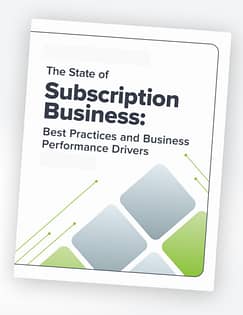
Introduction
Welcome to an advanced guide tailored for payment professionals aiming to elevate their payment systems and performance. This content is designed for subscription companies that already have a solid understanding of payments, involuntary churn, and customer lifetime value (LTV). While the insights provided here can benefit all subscription-based businesses, those with a more developed infrastructure will find this guide particularly valuable.
Our goal is to offer an advanced playbook for companies that have optimized their payment processes to build long-term customer relationships and effectively manage involuntary churn. Our team's insights will help finance, payment, and operations experts enhance their already strong performance to reach the level of top-performing companies.
The Foundation of Subscription Success
The subscription business model thrives on creating enduring customer relationships, which in turn generates a steady stream of revenue. Successful subscription companies understand that customer retention is key to sustaining a healthy business. By reducing churn, they ensure a continuous flow of income. These companies invest in programs to prevent cancellations, maintain high customer satisfaction, and recover customers who request to cancel their subscriptions. Traditionally, churn has been viewed as a result of customers voluntarily canceling their subscriptions.
However, this is only part of the picture. In reality, up to 48% of customer churn is due to failed payments, known as involuntary churn. Many subscription businesses are beginning to recognize this issue and are working to recover failed payments and reduce the associated churn. The challenge lies in how failed payments are perceived—often seen as a transactional issue rather than a relational one.
A New Perspective on Failed Payments
A more effective approach to failed payments involves viewing them not just as a transaction issue but as a relationship challenge. When a payment fails, there are two potential outcomes: either the customer is successfully recovered, or they churn.
To optimize your payment infrastructure and minimize the negative impact of failed payments, it’s essential to shift your focus from simply reducing failed payment rates to maximizing customer recovery and retention. This approach aligns with the core goals of the subscription model: acquiring and retaining customers to maximize revenue, retention, and LTV.

The Pitfalls of First-Generation Solutions
Many subscription companies have taken the first step in addressing failed payments by implementing basic recovery methods. These first-generation solutions, while a step in the right direction, often fall short because they treat failed payments as a purely transactional problem. Common strategies include rules-based retry systems and customer service outreach, both of which aim to minimize recovery costs.
However, these approaches often overlook the bigger picture: the goal should not be to minimize costs but to maximize relationships, retention, and revenue. Moreover, these basic solutions can lead to unintended consequences, such as increased failed payment rates due to excessive retry attempts, which can harm your merchant account’s health.
What Companies Should Do Instead
To measure the success of your failed payment recovery efforts, consider two key metrics:
- Total Revenue Recovered (Net of Recovery Costs): This measures the effectiveness of your recovery efforts in financial terms.
- Total Revenue/LTV Generated by Recovered Customers: This assesses the long-term value of customers who were recovered after a failed payment.
Recognizing the direct and indirect costs associated with internal recovery programs is crucial. Whether you’re using a rules-based retry system or relying on customer service outreach, these methods often underperform compared to specialized solutions and can lead to higher churn rates.

Comparing Internal Programs with Specialized Solutions
To evaluate the effectiveness of your recovery efforts, compare the revenue and costs of your internal programs against those of specialized third-party solutions. The simplest way to do this is to measure the net revenue generated in the month of recovery for each method. By doing so, you can determine the lift in recovery provided by specialized solutions.

The typical period of measurement is a calendar month, where the failed payment recovery quantity is measured in the 30 days after the month-end containing the quantity of failed payments.Comparing the results of these two calculations provides an easy way to measure the lift in recovery provided by the specialized recovery solution.
How to do simple net revenue comparisons

Comparing the results of these two calculations provides an easy way to measure the incremental revenue a specialized solution provides while also accounting for the direct costs of the third-party solution.
How to do full net revenue comparisons

Measuring the full revenue contribution of customers recovered from failed payments is critical if you want to maximize your chances for success. The results of these calculations make it clear that using a recovery solution that provides the highest recovery rate is always preferable — the cost of recovery is small compared to the full amount of revenue gained over a customer’s lifespan following recovery.
Our Team in Action
Our team's analysis of a representative sample of customers revealed significant gains when using their specialized recovery solution. Even when considering just a single month of recovery, our team's users saw a 47% increase in recovered customers and a substantial increase in revenue, even after accounting for recovery fees. Over the full lifetime of the recovered customers, the revenue gain was closer to 55%.
Best Practices for Recovery
A recent benchmark study found that top-performing subscription companies use an average of 2.6 recovery methods, with the most successful companies applying the highest-performing solution to fresh declines first. This approach maximizes recovery rates and minimizes the negative impact on merchant account health.

Conclusion
To build a successful subscription business, it’s essential to focus on creating long-lasting customer relationships that drive retention and revenue. Optimizing customer LTV by reducing failed payments and utilizing specialized recovery solutions is key to achieving this goal. By shifting your focus from short-term recovery costs to long-term customer retention and LTV growth, you can ensure your business remains competitive and profitable.
To become a top performer, measure the success of your recovery efforts through the lens of improved LTV and the ROI it provides.
Is your business experiencing failed recurring payments? Contact us today to explore solutions that will recover up to 80% of your failed recurring payments, increasing your cash flow and profitability.

